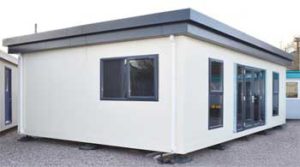
Portable buildings offer a unique solution for those needing extra space, whether for business, storage, or personal use. The rent-to-own option provides an accessible path to ownership, blending the flexibility of renting with the long-term benefits of owning. This blog will guide you through the entire process, from choosing the right building to customizing it to your needs, and finally, transitioning from a renter to an owner.
Step 1: Understanding Your Needs
Selecting the right portable building starts with a thorough understanding of your specific needs and requirements. This deeper dive into the initial planning process will help you consider all the essential factors before making your decision.
Identifying the Purpose of the Building
The intended use of your portable building is the primary factor guiding your choice:
- Storage Needs: If the building is for storage, assess the type and volume of items you plan to store. Different items may require varying levels of security or environmental control.
- Workspace Requirements: If the building is to serve as a workspace, consider the number of people using it, the equipment needed, and any specific layout requirements.
- Specialized Use: For uses like a studio, classroom, or workshop, factor in additional needs such as soundproofing, lighting, or ventilation.
Assessing Size Requirements
The size of the portable building should align with your intended use:
- Space Calculation: Calculate the amount of space needed based on your activities or storage requirements. Ensure there is enough room for easy movement and organization.
- Future Expansion: Consider potential future needs. Some portable buildings offer the flexibility to expand, which can be a significant advantage as your needs grow.
Understanding Location and Site Preparation
The location where you plan to place your portable building is crucial:
- Site Accessibility: Ensure the site is easily accessible for delivery and installation. Check for any obstacles that might hinder access.
- Ground Preparation: The site should be properly prepared, level, and stable. Some buildings may require a foundation or specific ground conditions.
- Local Regulations and Permits: Research local zoning laws and building regulations. Some areas may have restrictions on the type of structure allowed, or permits may be required for installation.
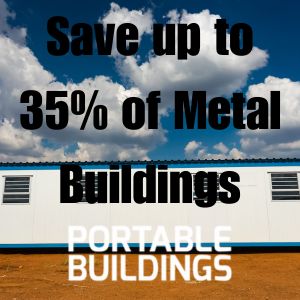
Considering Environmental Factors
Environmental conditions play a significant role in your choice:
- Climate Considerations: In areas with extreme weather conditions, choose materials and insulation that can withstand the local climate.
- Sunlight and Exposure: Consider the orientation of the building in relation to sunlight, especially if it will be used as a workspace or living area.
Evaluating Customization Options
Customization can make your portable building more functional and aesthetically pleasing:
- Interior Customizations: Look into options for interior customization, such as shelving, partition walls, or specific flooring types.
- Exterior Aesthetics: Exterior customization like paint color, roofing style, and window placements can help your building blend with its surroundings or stand out, based on your preference.
Budgeting for Your Portable Building
Your budget will ultimately guide your decision:
- Cost Analysis: Consider the cost of the building itself, delivery, installation, and any additional customization or site preparation work.
- Long-Term Costs: Factor in potential long-term costs, such as maintenance, utilities (if applicable), and any fees associated with permits or zoning.
Careful consideration of your specific needs, site requirements, and budget is key to selecting the right portable building rental or purchase for your purposes. By thoroughly evaluating these factors, you can ensure that your portable building choice not only meets your current needs but also has the potential to serve you well into the future. Remember, taking the time to assess your requirements in detail will lead to a more informed and satisfying purchase.

Step 2: Choosing the Right Portable Building
With a clear understanding of your needs, you can start looking at the options:
- Material Types: Explore the different materials available, such as wood, metal, or modular constructions, each with its benefits and aesthetic appeal.
- Design and Layout: Look at various designs and layouts that best suit your purpose. Some portable buildings come with pre-designed layouts, while others offer a more open plan.
Step 3: Exploring Rent-to-Own Options
When considering acquiring a portable building, the rent-to-own option presents a flexible and often financially accessible solution. This model allows individuals and businesses to utilize a portable building while making payments toward eventual ownership, combining the benefits of renting and buying into one streamlined process.
Understanding the Rent-to-Own Model
Rent-to-own, essentially a lease-to-own arrangement, involves making regular rental payments on a portable building, with an option to purchase it at the end of the rental term. This approach can be particularly appealing for those who need a portable building but may not have the capital for an outright purchase or prefer not to commit immediately to buying.
Financial Flexibility
One of the most significant advantages of rent-to-own is financial flexibility. This option does not typically require a large upfront payment, making it more accessible for small businesses or individuals. Instead of a substantial initial investment, you can start using the building immediately while spreading the cost over a more extended period.
Gradual Investment Toward Ownership
Each rental payment in a rent-to-own agreement contributes to the overall purchase price of the building. This gradual investment makes it easier to budget for and manage financially, as it eliminates the need for a lump-sum payment. Over time, renters can build equity in the building, moving closer to ownership with each payment.
No Long-Term Commitment Initially
Rent-to-own agreements offer the flexibility to opt-out before committing to purchase. If your needs change or you decide that the building is no longer suitable, you aren’t bound to a long-term commitment as you would be with a direct purchase. This flexibility is particularly beneficial for businesses whose space needs might evolve over time.
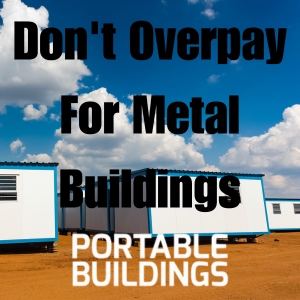
Potential for Customization
Many rent-to-own agreements allow for customization of the portable building. This means that you can modify or upgrade the building to suit your specific needs, even before you fully own it. Customizations might include adding insulation, adjusting the interior layout, or modifying the exterior appearance.
Testing Before Committing
A rent-to-own arrangement gives you the chance to ‘test out’ the building before deciding to own it. You can assess whether the building meets your needs in terms of size, functionality, and location. This trial period can be invaluable in ensuring that the building is the right fit for your long-term requirements.
Simplified Ownership Transition
At the end of the rental term, the transition to ownership is typically straightforward. Once all payments are made, ownership of the building transfers to you without the need for complex processes or additional fees. This simplicity can make the rent-to-own option very appealing.
Step 4: Customization and Personalization
The ability to personalize and customize your portable building is one of the key benefits that make this solution so attractive for various needs. Whether you’re looking to adapt the building for specific functional requirements or aiming to align it with aesthetic preferences, the range of customization options available can transform a standard portable building into a space that truly reflects your needs and style.
Tailoring to Functional Needs
The functional customization of a portable building can include interior modifications such as adding partitions, shelves, or specific types of flooring to suit different uses like offices, workshops, or storage spaces. You can also incorporate essential utilities like electrical wiring, plumbing, and insulation, making the space comfortable and usable year-round.
Aesthetic Customization
On the aesthetic front, there are numerous ways to personalize your portable building. These include choosing from a variety of colors for the exterior, selecting different styles of windows and doors, and adding external features like porches or awnings. Such customizations not only enhance the appearance of your portable building but also ensure it complements its surroundings, whether it’s placed in a residential backyard, a commercial lot, or within an educational campus.
Making It Uniquely Yours
With these personalization and customization options, your portable building becomes more than just a functional space; it becomes a reflection of your personal or brand identity. Whether it’s by implementing your company’s colors and logos for a business setup or choosing design elements that reflect your personal taste for a home extension, these modifications allow you to make the space uniquely yours.
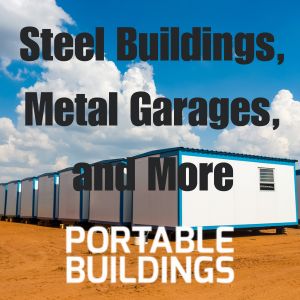
Step 5: Delivery and Installation
Once you’ve selected and customized your building, the next step is delivery and installation:
- Site Preparation: Ensure the site is ready for installation, including any necessary groundwork or foundation.
- Delivery Process: Coordinate with the provider for the delivery. Most companies handle the transportation and installation.
Step 6: Transitioning to Ownership
As you near the end of your rent-to-own agreement, there are a few final steps:
- Final Payments: Keep track of your payment schedule and be aware of when your last payment is due.
- Ownership Transfer: Upon the final payment, the ownership of the building transfers to you. Ensure you receive all necessary documentation.
The journey from renting to owning a portable building is straightforward but requires careful consideration at each step. By understanding your needs, choosing the right building, customizing it to your specifications, and following through the rent-to-own process, you can seamlessly transition from a renter to an owner. Portable buildings are a practical solution for a variety of space needs, and with the rent-to-own option, they are more accessible than ever.

Choosing the Right Portable Building for Your Needs
Selecting the right portable building for your specific needs is crucial in ensuring it effectively serves its purpose, whether for storage, office space, or any other application. Portable buildings come in various materials and designs, each offering unique benefits. This guide aims to help you navigate the choices, whether you’re considering metal, wood, or modular buildings, to find the best fit for your needs.
Understanding Different Types of Portable Buildings
Portable buildings are versatile structures that can be used for a multitude of purposes. Let’s explore the most common types:
Metal Portable Buildings
- Durability: Metal buildings are known for their durability and resistance to weather elements.
- Maintenance: They require minimal maintenance and are less prone to issues like rot or pest infestation.
- Security: Metal structures often provide better security, making them suitable for storing valuable equipment or items.
- Uses: Ideal for workshops, storage sheds, garages, and industrial applications.
Wood Portable Buildings
- Aesthetics: Wood buildings offer a classic, natural look that blends well with various environments.
- Customization: They can be easily customized with paint, trim, and other design elements.
- Insulation: Wood naturally provides better insulation than metal, which can be advantageous in certain climates.
- Uses: Perfect for home offices, studios, garden sheds, and traditional storage needs.
Modular Portable Buildings
- Flexibility: Modular buildings offer flexibility in design and layout, allowing for multiple configurations.
- Scalability: They can be easily expanded or reconfigured to meet changing needs.
- Eco-Friendly: Many modular buildings are designed with eco-friendly materials and practices.
- Uses: Suitable for offices, classrooms, healthcare facilities, and temporary housing.

Factors to Consider When Choosing a Portable Building
When selecting a portable building, consider the following factors:
- Purpose: Clearly define what you will use the building for. This will help determine the size, layout, and features you need.
- Budget: Consider your budget for the building, including any customizations or additional features.
- Location: Think about where the building will be placed. Certain materials may be better suited to specific environments or local regulations.
- Customization Needs: If you plan to customize the building, some materials may be more accommodating to changes than others.
Making the Decision
Assessing Your Requirements
- Start by listing your specific needs, such as the size required, the type of items you’ll be storing, or the number of people using the space.
- Consider the longevity of the building and how your needs might evolve over time.
Consultation with Experts
- Consulting with professionals can provide valuable insights. They can offer advice on the best type of building for your specific requirements and location.
- Ask about customization options, installation processes, and any maintenance requirements.
Choosing the right portable building involves careful consideration of your needs, the building’s intended use, and the specific characteristics of different materials. Whether you opt for the durability of metal, the natural aesthetics of wood, or the flexibility of modular design, ensure that your choice aligns with both your current and future requirements.

